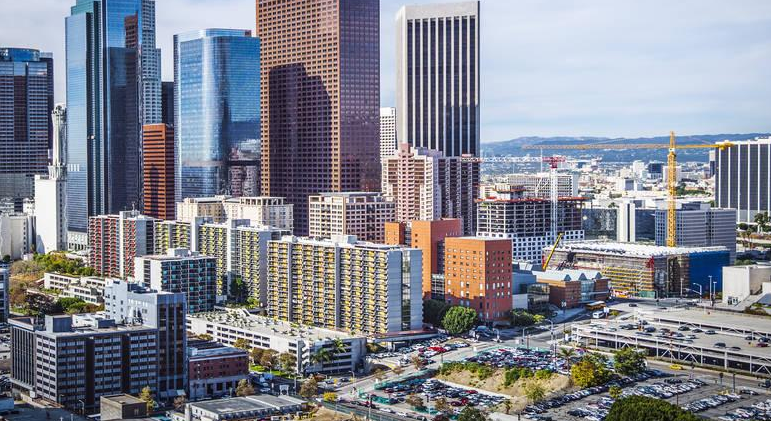U.S. Edges Toward Bankruptcy Crisis
Advertisements
The United States has often been seen as a land of opportunity, characterized by its iconic skyscrapers, dynamic cities like New York, and the tantalizing promise of quick wealth. Yet, this once glittering image is increasingly marred by the reality of an unprecedented debt crisis. The American Dream, it seems, has become a nightmare, leaving behind a landscape littered with shattered aspirations and unfulfilled hopes.
As we dive into the depths of this national crisis, the figures are staggering. Recent estimates predict that by 2024, the total national debt will soar beyond a staggering 36 trillion dollars. To put this into perspective, within just four months, the debt increased by one trillion dollars—a mind-boggling statistic. This debt translates to approximately $107,000 for every citizen, a burden that weighs heavily on both the working class striving to make ends meet and the affluent striving to maintain their status. It is a collective responsibility no one can evade.
To further complicate matters, interest payments alone amount to a staggering $1.2 trillion annually, consuming 24% of the government's revenue. This means a significant portion of the hard-earned income of everyday citizens is funneled into servicing this debt rather than being invested in public services or infrastructure. Many hardworking individuals are disillusioned as they realize that their labor is merely feeding a debt cycle that offers little in return.
The fiscal imbalances are stark. In the fiscal year 2024, projected government revenues stand at $4.92 trillion, while spending is slated to reach an unimaginable $6.75 trillion. This results in a deficit that leaps to $1.83 trillion, a figure that strains credibility and invites concern. Notably, interest payments on the debt take up a quarter of the budget, while defense spending commands another 18%. As public services face cuts, many Americans find themselves increasingly vulnerable, wondering how the nation will sustain itself in these turbulent times.
To add another layer of anxiety, projections for 2034 estimate a national debt of around 56.8 trillion dollars, with interest payments reaching a chilling 1.9 trillion. Such alarming forecasts raise serious questions about the viability of critical public services such as education and healthcare. With dwindling resources for these essential areas, the quality of life for citizens is at risk. How can one expect a robust society when the pillars of education and health are crumbling under the weight of impending financial ruin?
Infrastructure, long heralded as a hallmark of American excellence, reveals another troubling narrative. Take New York's subway system as a case study; characterized by its outdated equipment and infrequent updates, commuters often face the daunting task of navigating a system that has not kept pace with the demands of a modern city. High-speed rail options are virtually non-existent, and the dream of rapid transit between major urban centers remains just that—a dream. Frustration abounds as residents witness the stark contrast between the promise of progress and the reality of stagnation across the country.

Compounding these economic woes is a troubling rise in crime and social instability. Policies like "zero-dollar purchase" have turned certain neighborhoods into veritable crime havens, leaving businesses vulnerable and scared. The effects of California's Proposition 47 can be witnessed through an ongoing surge in street crime that not only threatens public safety but also endangers the very officers sworn to protect it. This grim reality leaves many citizens uneasy, questioning whether their daily lives can maintain any semblance of normalcy.
Moreover, Oregon's new legislative measures, which have loosened drug regulations, are symptomatic of a troubling trend spreading across multiple states. The attempt to mitigate problems associated with drug use has, in many instances, worsened conditions on the ground, eroding the safety and security once taken for granted. The refrain of "better not touch drugs" has become a hollow warning as communities grapple with rising addiction rates and related social issues.
Amidst this chaos, a critical analysis from former Secretary of State John Kerry paints a dire portrait of the current situation. He posits that true freedom is manifested in law and order, yet America seems to drift further from this ideal with every passing day. As the current state illustrates a break in the foundational structure of society, one cannot help but ponder the precariousness of the country's future.
As we stand at this crossroads, the inevitable decisions ahead will shape the trajectory of the United States. The repercussions of inaction could plunge the nation headfirst into bankruptcy, pulling millions down with it. Voters and policymakers alike must engage deeply with these complex issues. The clock is ticking, and time is fast running out. As reality settles in, it becomes increasingly clear that the country is teetering on the brink of an abyss that could redefine the American narrative altogether.
Write a Comment